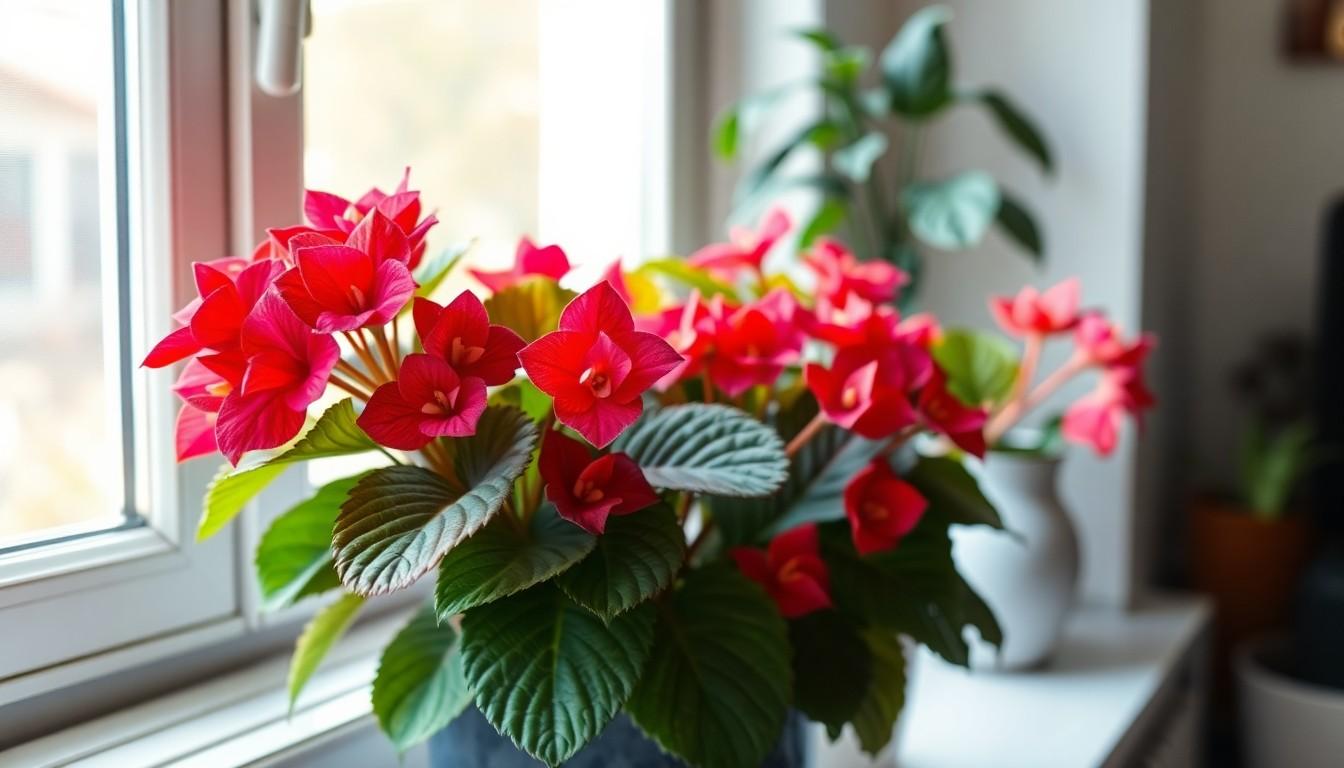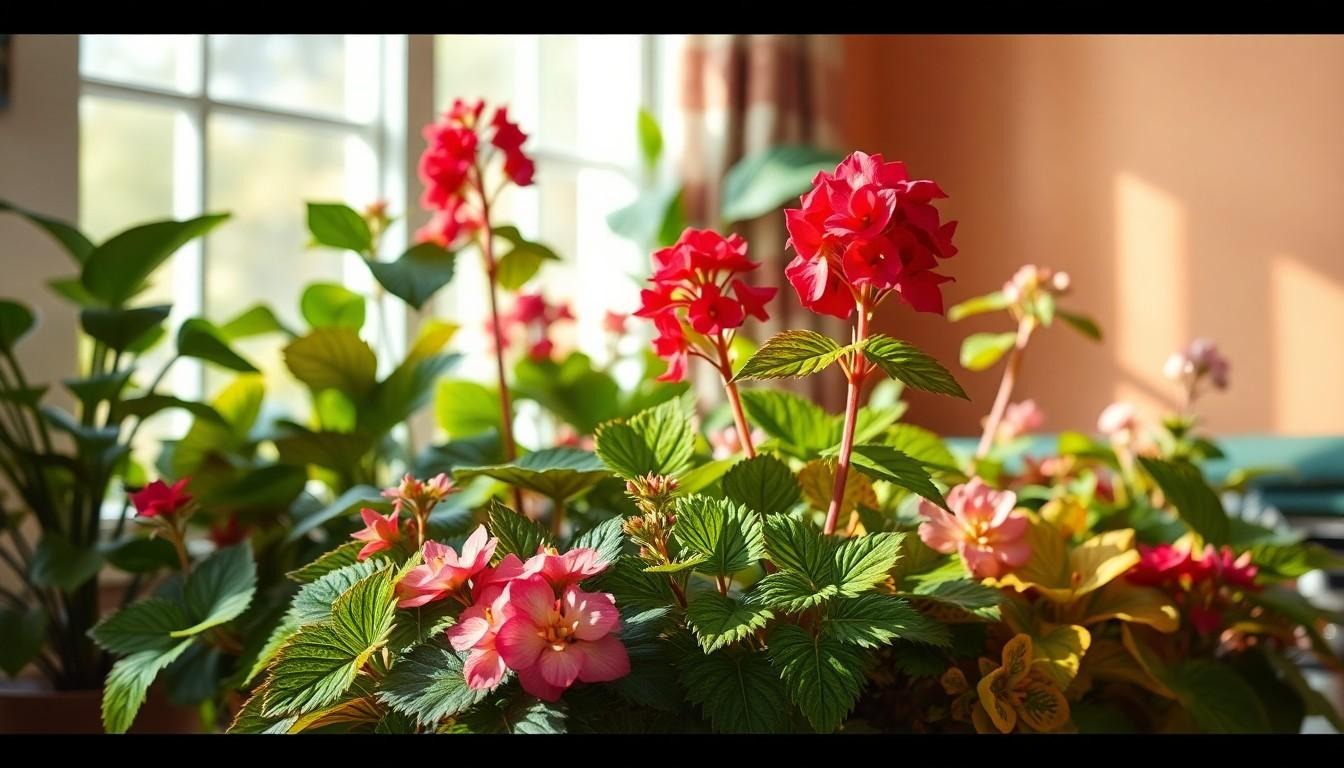Begonias are like the divas of the plant world—beautiful, vibrant, and just a tad high-maintenance. But don’t let that scare you off! With the right care, these stunning plants can transform any space into a lush paradise. Whether you’re a seasoned plant parent or a newbie with a penchant for green thumb disasters, mastering begonia care is easier than you might think.
Imagine your home filled with colorful blooms and lush foliage, all thanks to your newfound begonia expertise. From watering to lighting and everything in between, this guide will help you keep your begonia thriving. So grab your gardening gloves and get ready to impress your friends with your botanical prowess. Who knew plant care could be this fun?
Begonia Plants Care
Begonia plants stand out for their vibrant foliage and unique blooms. Known for their wide variety, they thrive in indoor and outdoor settings. Many cultivars offer different leaf shapes, colors, and textures, making them appealing to plant lovers.
Tropical and subtropical regions often host begonias in their natural habitat. Some common varieties include Rex, flowering, and cane begonias. Each type exhibits distinct characteristics, providing options for diverse gardening preferences.
Light conditions play a crucial role in begonia health. They prefer bright, indirect light; too much direct sunlight can scorch their leaves. When grown indoors, placing them near an east or north-facing window typically yields the best results.
Watering practices significantly affect growth. Maintaining consistently moist soil is vital. Allowing the top inch of soil to dry between waterings helps prevent root rot. It’s essential to ensure proper drainage, as stagnant water can harm the plant.
Humidity levels also influence begonia success. High humidity boosts growth, making it advisable to mist the leaves regularly. In dry environments, using a humidity tray enhances moisture without overwatering.
Fertilization contributes to vibrant blooms. Using a balanced liquid fertilizer every four to six weeks during the growing season promotes healthy development. Adjusting the frequency in the winter months is necessary as growth slows down.
Pest management prevents common issues. Aphids and spider mites may occasionally target begonias, necessitating regular inspections. Applying insecticidal soap could help address infestations effectively.
Understanding these essential care elements fosters healthy, thriving begonias and promises an enjoyable gardening experience.
Essential Growing Conditions

Begonia plants thrive under specific growing conditions that enhance their beauty and health. Understanding these needs ensures vibrant foliage and robust blooms.
Light Requirements
Bright, indirect light serves as the primary light requirement for begonias. Direct sunlight can scorch their leaves, leading to damage. Placing them near a north or east-facing window usually provides optimal lighting conditions. Some varieties, like Rex begonias, can tolerate slightly lower light levels but benefit from regular exposure to indirect sunlight. Adjusting the light source when observing signs of stress, such as pale leaves, proves essential for plant health.
Temperature Preferences
Temperature plays a vital role in begonia care, as these plants prefer a range of 65°F to 75°F (18°C to 24°C). Nighttime temperatures can drop slightly, ideally between 60°F and 70°F (15°C to 21°C). Any drastic fluctuations in temperature can result in stress or disease. Plants react negatively to drafts or cold windows. Maintaining a steady, warm environment helps begonias flourish and encourages growth.
Humidity Levels
High humidity significantly benefits begonias, as they thrive in moist air. Levels around 50% to 70% create ideal conditions for these plants. Regular misting helps maintain humidity, especially during dry seasons. Utilizing humidity trays filled with water and pebbles also aids in increasing moisture levels around the plant. Conversely, extremely dry environments might cause leaf curling or browning at tips, indicating the need for a humidifier or consistent misting routine.
Watering and Feeding
Watering and feeding play a vital role in begonia plant care. Maintaining the right moisture and nutrients contributes significantly to their health and vibrancy.
Watering Tips
Begonias thrive in consistently moist soil. Checking the top inch of soil can help determine when to water; if it feels dry, it’s time to provide moisture. Water until it drains from the bottom of the pot, ensuring the entire root system is hydrated. Avoid letting the plant sit in standing water, as this can lead to root rot. Adjust watering frequency based on the season; during warmer months, begonia plants often require more frequent watering than in winter. Monitoring environmental humidity also helps gauge watering needs.
Fertilizing Schedule
Fertilizing begonias every four to six weeks enhances their growth and blooming capabilities. Using a balanced liquid fertilizer provides essential nutrients. During the growing season, typically from spring to early fall, applying fertilizer regularly promotes vibrant foliage and flowers. Lower the frequency during the dormant winter months when the plant’s growth slows. Diluting the fertilizer to half-strength can prevent nutrient burn, ensuring healthy development. Regular feeding supports robust plants ready to showcase their stunning colors and unique textures.
Common Pests and Diseases
Begonias are susceptible to several pests and diseases that can impact their health. Identifying these issues early is crucial for effective management.
Identification and Prevention
Aphids, spider mites, and mealybugs are common pests found on begonias. Regular inspections of leaves and stems reveal signs of infestations, such as speckled leaves or sticky residue. Maintaining proper humidity levels minimizes pest attraction, while ensuring adequate air circulation around plants promotes overall health. Choosing disease-resistant varieties also aids in prevention. A clean growing environment ensures that pests are less likely to thrive. Applying neem oil or insecticidal soap as a preventive measure reduces potential infestations.
Treatment Solutions
Addressing pests involves immediate action. Spraying infested leaves with insecticidal soap can eliminate visible pests. For spider mites, increasing humidity helps deter future infestations. If pests persist, treating plant foliage with neem oil offers a safe alternative. Removing heavily infested leaves is essential in preventing the spread of disease. Additionally, quarantining new plants for a few weeks before introducing them to existing collections prevents cross-contamination. Fungicides can treat specific diseases like powdery mildew, ensuring plants remain healthy. Consistent monitoring after treatment ensures plants recover effectively.
Propagation Techniques
Begonia plants can be propagated through various methods, enabling enthusiasts to expand their collection with ease.
Leaf Cuttings
Leaf cuttings serve as a popular method for propagating begonias. Select healthy leaves as the starting point. Cut the leaf into sections, ensuring each piece contains a vein. Place the cuttings in a well-draining soil mix, burying them slightly. Maintain high humidity around the cuttings to encourage root development. Mist the cuttings regularly and provide gentle warmth. Rooting typically takes 3 to 4 weeks. Once rooted, transplant the new plants into individual pots.
Division Method
The division method proves effective for mature begonia plants. Begin by gently removing the plant from its pot, taking care not to damage the roots. Examine the root ball for natural divisions. Use a clean, sharp knife to separate the sections, ensuring each division has roots and leaves. Transplant the sections into fresh soil, maintaining adequate spacing. Water the divided plants thoroughly to encourage establishment. With proper care, each division should thrive in its new environment.

